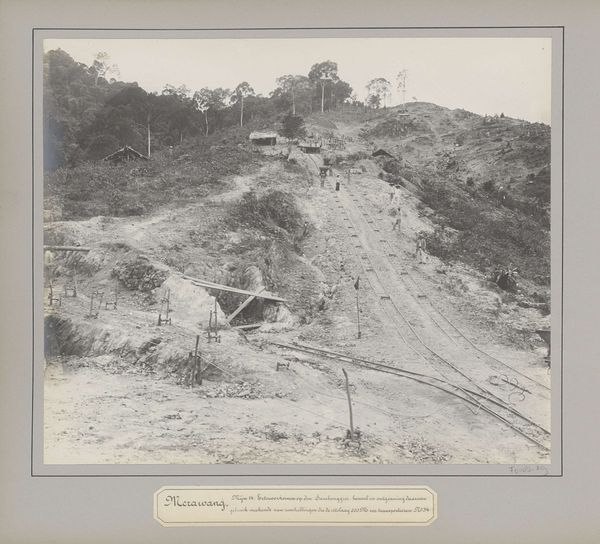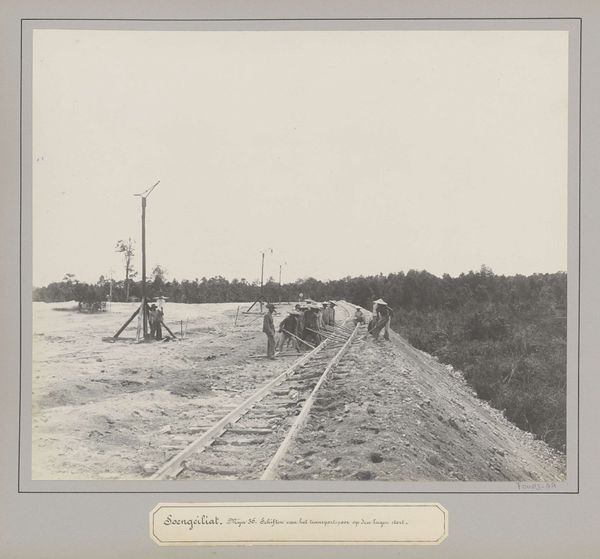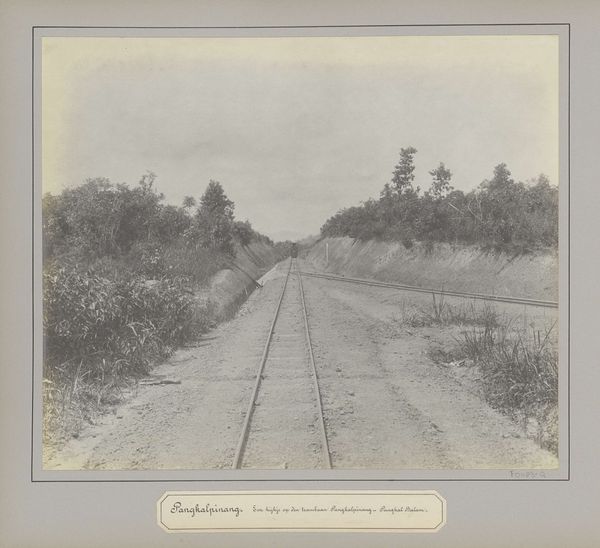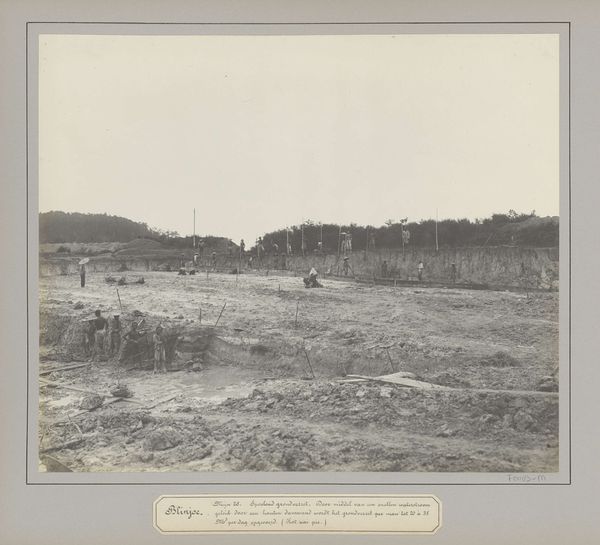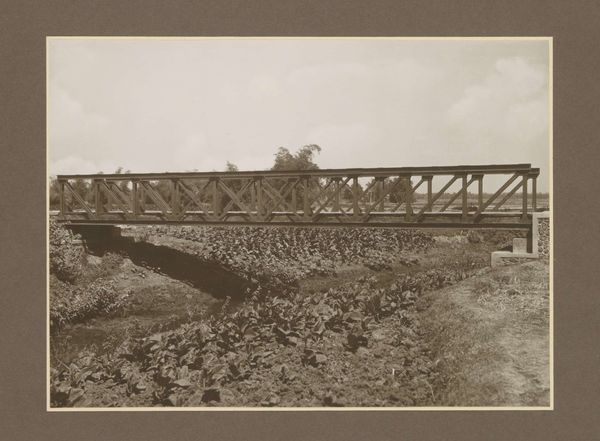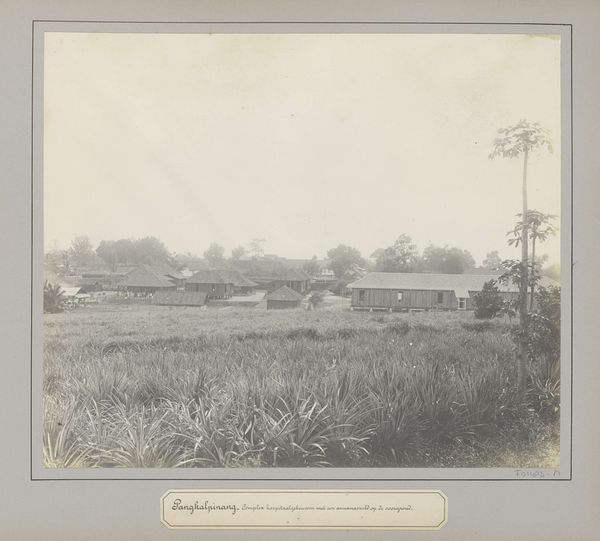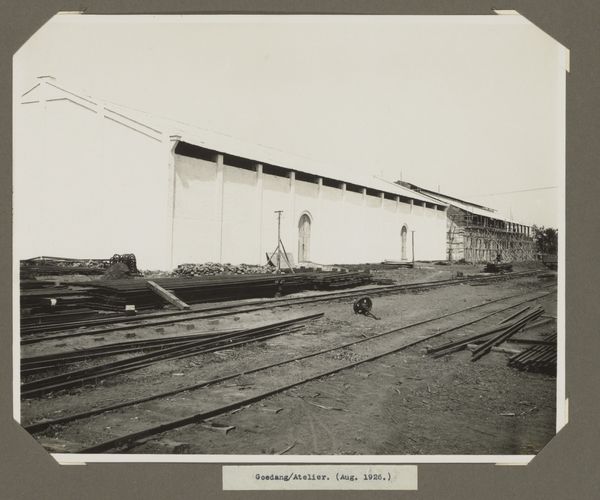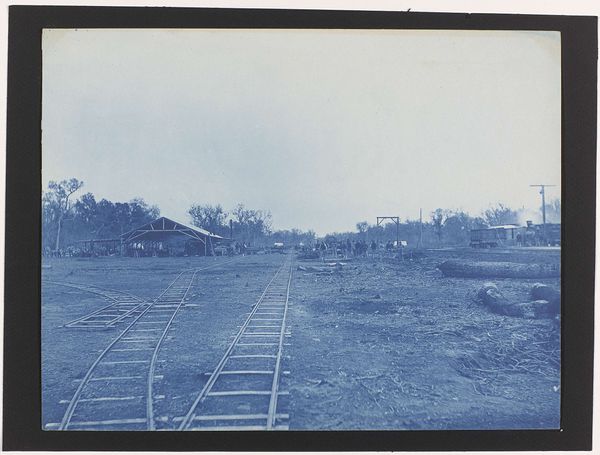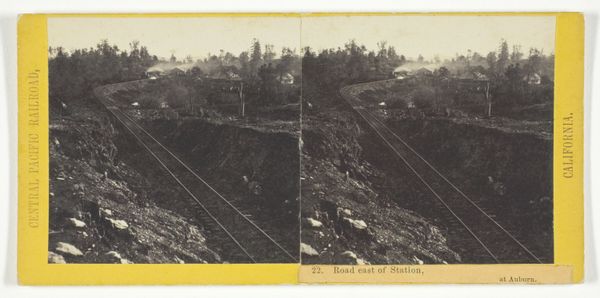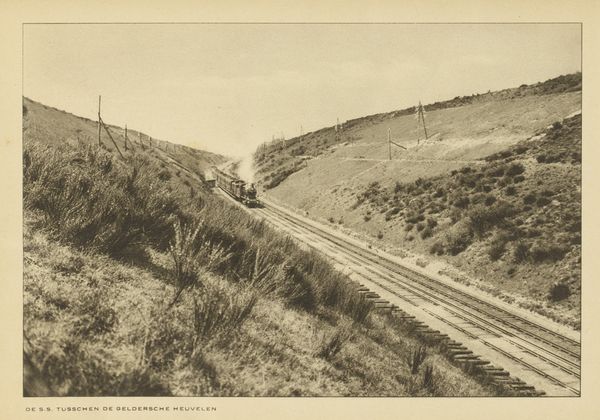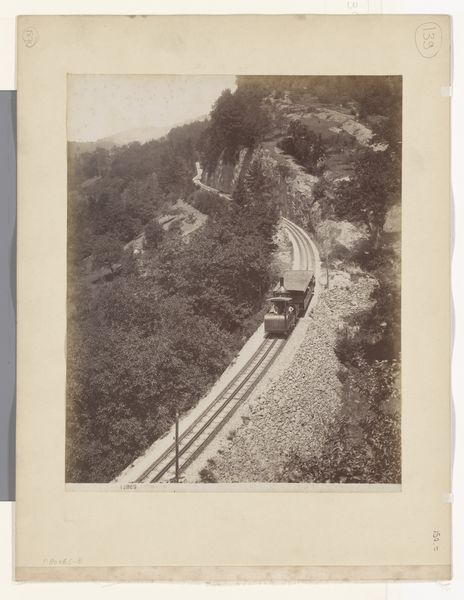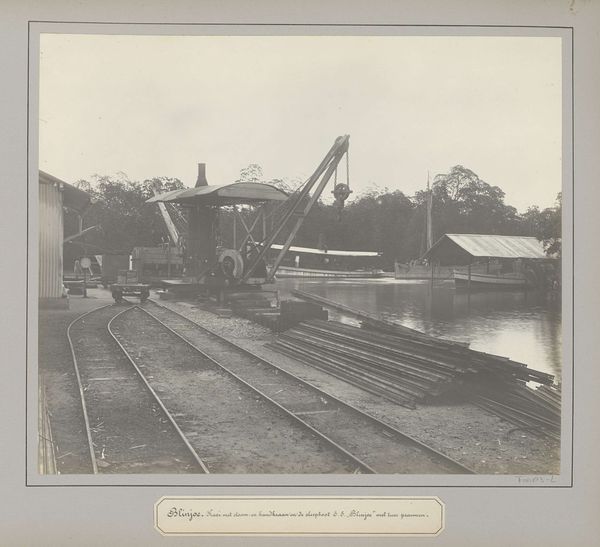
Helling met kruisende spoorbanen op een tinonderneming te Merawang c. 1900 - 1920
0:00
0:00
photography
#
landscape
#
photography
#
realism
Dimensions: height 239 mm, width 284 mm
Copyright: Rijks Museum: Open Domain
Curator: Here we have an interesting photo from the Rijksmuseum collection. It’s titled “Helling met kruisende spoorbanen op een tinonderneming te Merawang,” or “Slope with intersecting railroads at a tin company in Merawang," created sometime between 1900 and 1920. Editor: My first impression is one of desolation, actually. Despite the landscape, the human element seems stark. The light feels very matter-of-fact. Curator: Exactly! These barren tracks slicing through the earth become visual scars. I see potent symbolism here – the iron rails juxtaposed against the natural incline speak to industry’s encroachment upon untouched land, and more profoundly, on an ancestral way of life. Editor: I agree, it's loaded with historical tension. This likely captures a moment within Dutch colonial activity, specifically concerning tin extraction. Who benefitted, and who bore the cost? The image presents an undeniable power dynamic, and the photograph as artifact allows viewers to consider colonial resource extraction and global economics within a localized framework. Curator: Indeed, beyond economics we confront questions of cultural imposition and disruption. What of indigenous spiritual attachments to these landscapes? It appears the railroads trample not just the earth, but layered narratives that may go unheard. Editor: Precisely. Even something seemingly mundane—the design and installation of these railroads— becomes infused with questions of labor exploitation and environmental devastation, which can offer an intersectional decolonial analysis. The "tin company" seems less neutral now; its industrial apparatus and its output carry weight in social and geopolitical ramifications. Curator: And perhaps even that’s a question the photographer meant for us to ponder. Thank you for unveiling those intricate historical layers and meanings—it makes me see it so much more. Editor: It has been my pleasure. And that photograph has me asking new questions myself about power structures as they relate to environmental alteration and capitalist systems.
Comments
No comments
Be the first to comment and join the conversation on the ultimate creative platform.
